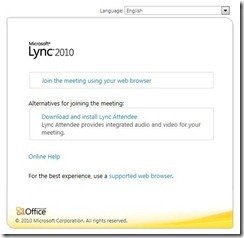“Elyza”, sister to “Profiles for Lync”, is a client-side app I’ve built using the Lync SDK.
Elyza started life as a means for me to test Federation when I deploy a new Lync, and also as an auto-responder to help me present demos and deliver user-training without needing to annoy some poor colleague back in the office.
Elyza hooks into the running Lync client instance on your PC and responds to incoming IMs. When sent a suitably formatted “/” command, Elyza will change status, add or remove you as a Contact, update her personal note or even tell you the time. (Send “/?” for a list of the available commands).
With that code largely working, my partner suggested incorporating “ELIZA”, a text-based “chatterbot” that we both encountered in our high school years. I remember chatting with ELIZA on the solitary computer that the school possessed – an Apple ][.
I was lucky enough to stumble across a java version written by Charles Hayden, and he kindly consented to me re-using and converting it to C# for this application. Charles’ version of the script is a complete and faithful implementation of Weizenbaum’s original, and I’ve used the same here. The script is however resident in a plain text file in the Elyza directory, so you’re free to extend the grammar to move it with the times, or perhaps even translate it into other languages!
Download
Elyza 2013 (v13.1.0.40 – 10th May 2014) can be downloaded from here.
Elyza for Lync 2010 (v1.0.0.39 – August 2012) can be downloaded from the TechNet Gallery site here.
Continue reading ‘Elyza’ »

